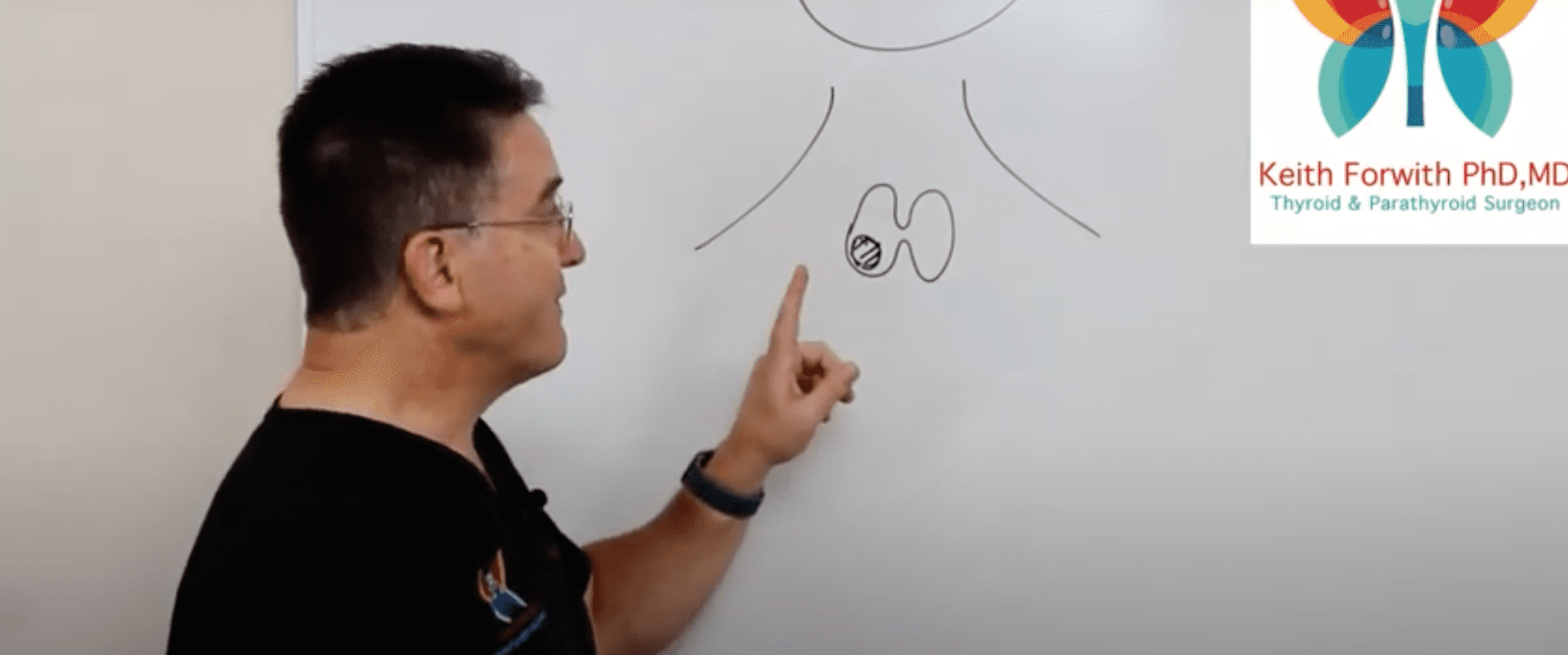
Innovative Thyroid Surgeon

A thyroid nodule is a growth or lump in the thyroid gland typically either felt on the front low part of the neck or seen by ultrasound. More than 90% of thyroid nodules are benign, but in some cases, they can signify thyroid cancers. Most nodules are small and not typically noticeable. However, if a lump in the thyroid is felt, this definitely should be evaluated by ultrasound to further characterize the nodule. Thyroid nodules are very common and become more common as people get older, but they can occur at any age. Overall, 5% of women and 1% of men have thyroid nodules that can be felt on physical examination. Autopsy studies have shown that very small nodules are even more common, appearing in as many of half the population that are 65 or older.
Most nodules are too small to make a noticeable difference in the appearance of the neck. However, visible nodules should always be evaluated. In children and teenagers, thyroid nodules are markedly different than in adults. Cancer rates for thyroid nodules in children run between 20-30% and any nodule in a child should be evaluated immediately. Early stage thyroid cancer has no symptoms! There is no way to tell (by symptoms) whether someone has early stage thyroid cancer. In later stages, concerning symptoms for thyroid cancer would include:

Innovative Thyroid Surgeon